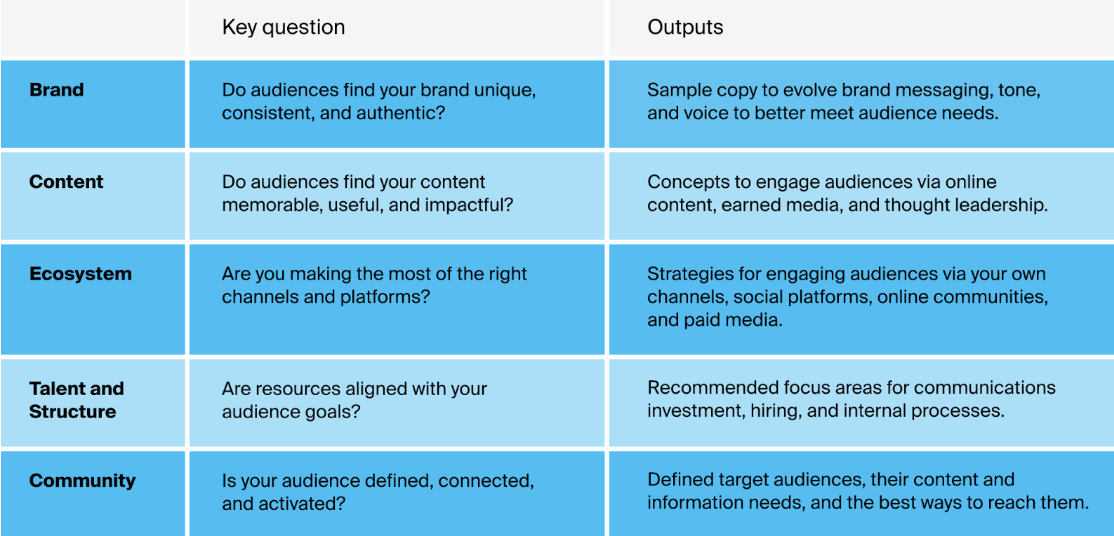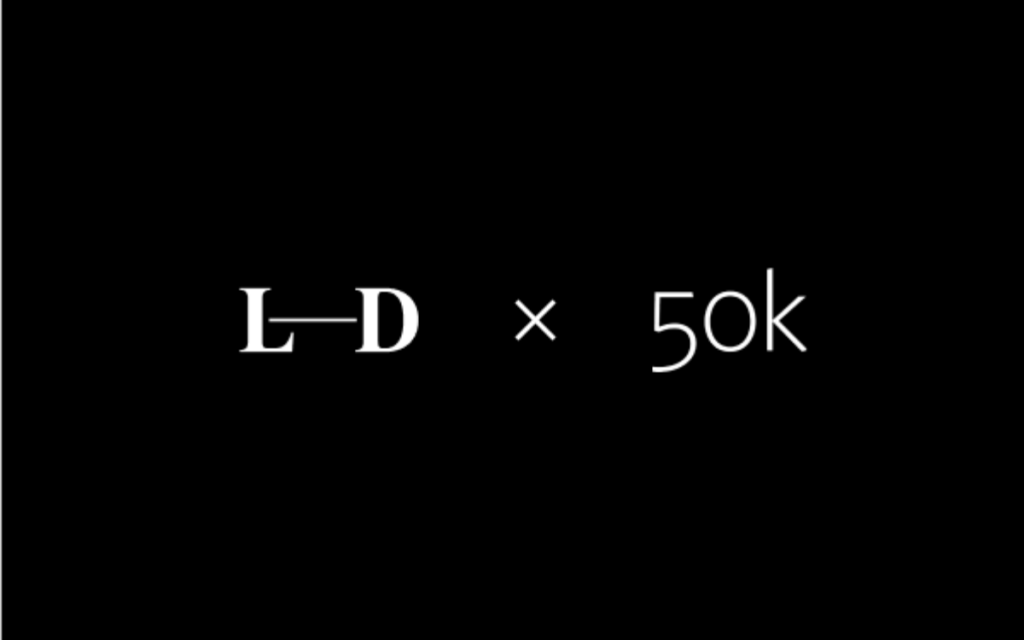Brands: Don’t guess who your audiences are
The task of knowing your audiences and their needs is not an easy one, but it is a crucial part of building the loyal community every brand seeks
Jason Tomassini is vice president of editorial at Long Dash and has worked as a journalist in newsrooms such as The New York Times, Reuters, and Education Week.
Who’s the audience?
In my work, this may be the question I ask the most. I ask it of clients. I ask my colleagues. I ask it rhetorically of a particularly cringe-worthy TV ad or brand tweet.
It’s a simple question that’s very hard to answer. We generate tons of data about who we’re reaching, who we could be reaching, and who we should be reaching—but there are still so many unknowns. The data is fragmented, often unreliable, and equal parts noise and signal. This is frustrating! Our audience impacts everything a brand does—its identity, its business strategy, its people, and its investments. We spend all this time crafting wonderful products and services, meaningful brands, and thoughtful messages, and we don’t really know who it’s for. With budgets tightening everywhere, it’s harder to gamble on this kind of imprecision. Having a full and complete answer to this question guarantees the best return on investment.
So when we ask clients, Who’s the audience, we get a handful of totally understandable but also frustratingly incomplete responses.
“We want to reach everyone.”
First, I get it! Why close yourself off to people who may find your brand, message, or product interesting? But of course it’s hard (and super expensive) to reach everyone, because not everyone wants the same thing. The path to “everyone” starts with “less than everyone.”
Or, we hear: “It’s Janet, the working mother of two who loves The Economist. And it’s Keith, the lifestyle influencer who spends most of his disposable income on dining out.”
Totally get it! Personas are helpful ways to put a human identity to the swaths of data. But where do you find Janet and Keith? And what if in narrowcasting to Janet and Keith, you are missing out on lots of other audiences?
Another one: “Midwesterners who make more than $80,000 per year, have a pet, and work in the real estate industry.”
These kinds of demographic segments make growth marketing much more precise. But are they more effective? People who fit this criteria may be similar in some respects but could be completely different from each other in others—their life experiences, identity, and point of view.
We might even get different versions of the answers above from within the same organization, from different teams and based on different interpretations of data and strategy. A fundamental question becomes a source of fragmentation and misalignment.
At Long Dash, we are constantly thinking about how to arrive at a better answer to Who’s the audience? Acknowledging that audiences are nuanced and evolving, we do have a methodology for making sense of all the inputs and data so our clients get a clearer picture of who they want to reach and how to do it, across the organization.
How do we answer the question above?
Sign up for OnBrand
Our weekly digest featuring ideas on the future of brand.
We approach it like the group of former journalists and journalism-trained professionals we are. When I was a journalist, I always considered who I was writing for but I never thought of the audience as one particular group with a certain set of characteristics. Instead I thought about Who would benefit most from this story and why? With that view, the audience can be quite expansive and diverse. But the audience needs that the story addresses could be quite precise.
For example, an education story could resonate with educators, parents, policymakers, executives, my Twitter followers, my friends, and even me. But the benefit they might get from the story could be far more concentrated—the first-hand perspective of teachers, or the historical context of current education trends, or illumination into how kids learn. Put in the context of a modern brand: If I’m trying to get the audience to “buy” my story, I want to be precise about the value I can offer them.
This is a 360-view of the audience that accrues over time and with many inputs—what I read, who I interview, what I experience first-hand, the lived experiences of the people who trust me.
We take a similar 360-degree investigation of both current and aspirational audiences and their needs. Through a mix of qualitative and quantitative research (surveys, focus groups, interviews, field observations, audience analytics), we aren’t over-indexing on persona-style information like psychology and behavior or demographic information that doesn’t reflect the nuance of human beings.
Instead, we look at your audience analytics to see how people interact with your brand. That means going beyond “what’s getting the most clicks” to “who are your most loyal audiences and why.” There’s so much to learn—in many cases, how can we deliver more tangible value and how can more revenue be gained—from the people who are already loyal to a brand. These people represent the north star, the truest expression of what nearly every brand wants to accomplish: to be an important part of someone’s life. We don’t want to stop at “reaching more audience”; we want to build a growing community of loyal audience.
We don’t want to stop at “reaching more audience”; we want to build a growing community of loyal audience.
Best of all, consumers are ready for this. They want brands to know them and their opinions. Our own Consensus Commerce research shows that nearly half of consumers would like to have more influence over their favorite brands, and the leading reason behind this is to improve the brands’ products and services. Salesforce’s global consumer research found that 73% of customers expect brands to understand their unique needs and expectations. Eighty-eight percent believe that the experiences brands provide are as important as their products and services. So when brands earn audiences’ engagement, they stand to unlock growth in the form of valuable consumer insights, ambassadorship, and loyalty.
We take all of this (plus lots more investigative research into your business, your competitive landscape, and your brand identity) and come up with your Audience Quotient® (AQ®)—a diagnostic of five key pillars of audience engagement and a road map to strengthen each one.

These pillars came from extensive conversations with clients in marketing, product, brand, and communications leadership roles. We also survey our client’s teams on how well they understand their own audiences. This tells us who the brand is hoping to reach, the goals in reaching them, and any gaps in alignment or confidence across the organization.
With AQ® , we avoid the tendency for audience understanding to become siloed. The product team thinks in terms of user personas. The growth team thinks in terms of customer conversation. The brand team thinks in terms of addressable markets. And they are often working off of different sets of data or research. Brands will better reach and build relationships with audiences if everyone is operating from a shared, well-rounded understanding of who those audiences are.
Our AQ® report reflects that, with what we believe is a sharper and more useful understanding of your audience, inclusive of demographic and psychographic elements:
- Audience typologies that define your target audiences through mix of quantitative and qualitative measures
- Addressable markets by size and demographics
- Growth benchmarks by conservative, moderate, and ambitious estimates
- Current audience cohorts that map to target audiences
- Shared audience needs
- Unique value proposition for serving your audiences
We work with our clients to socialize this cohesive view of the audience with different teams and discuss the implications going forward.
So if anyone in your organization is asked “Who’s the audience?” they not only have a clear and confident answer, they may tell the person asking more than they ever wanted to know.





